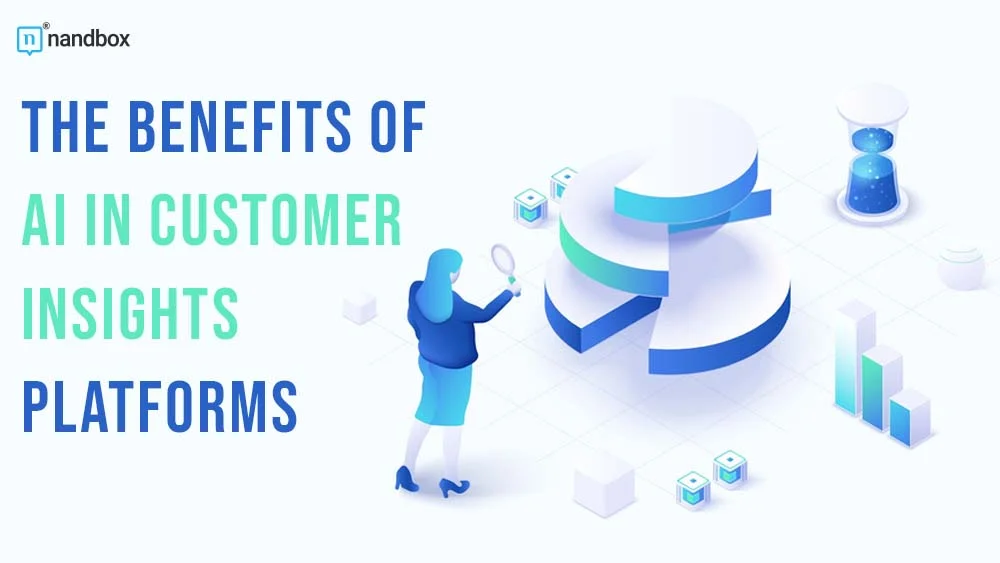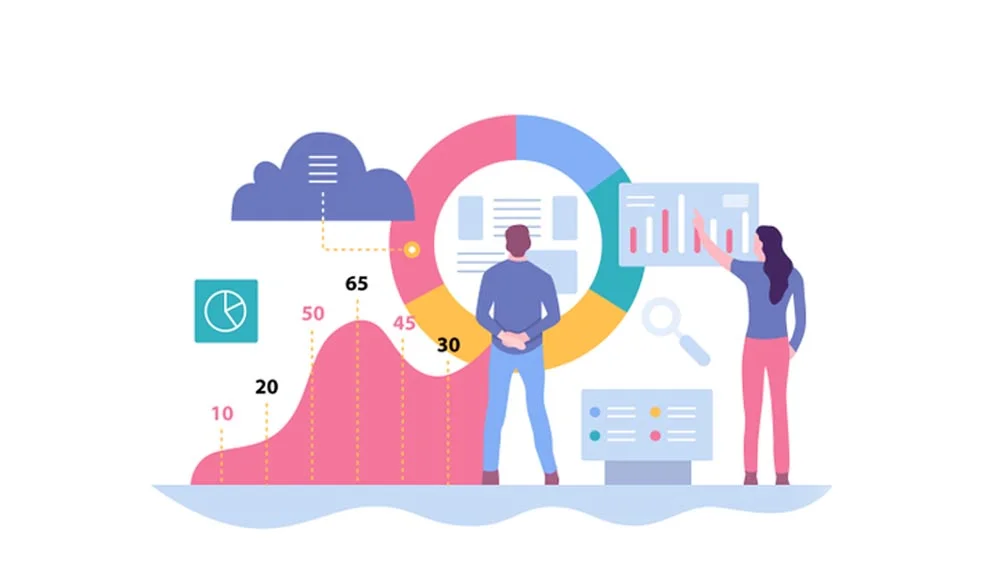The era of guesswork in customer relations is over. AI is reshaping how businesses gather and use customer data. It is more than a tool; it’s a strategic asset redefining customer engagement. Artificial intelligence brings speed, accuracy, and depth to customer insights. It helps businesses understand customer needs better, predict future behaviors, and personalize experiences at scale. The result? Happier customers and healthier bottom lines. Let’s dive into the transformative benefits of AI in this crucial area of business.
Real-Time Data Processing and Personalization
AI algorithms are revolutionizing how businesses handle customer data. These powerful tools can process vast amounts of information in real time, allowing companies to react to customer needs as they happen. This transformation is reshaping customer service and marketing strategies across industries.
With AI, the dream of true personalization at scale becomes a reality. Every interaction with customers can be unique to individual preferences and behaviors. From product recommendations to dynamic content, AI ensures each customer feels understood and valued.
Real-time personalization significantly boosts customer satisfaction and loyalty. This personalization extends beyond simple product suggestions. AI can customize entire user interfaces, email content, and even pricing strategies based on individual customer data. When customers feel that a brand understands and anticipates their needs, they’re more likely to remain loyal and make repeat purchases.
Key Benefits:
- Increased customer satisfaction
- Higher conversion rates
- Improved customer retention
- Enhanced brand loyalty
AI-driven personalization allows marketers to create highly targeted campaigns. By analyzing customer behavior in real-time, AI can help businesses deliver the right message to the right person at the right time, maximizing marketing ROI.
AI in Action: Netflix’s Recommendation Engine
Netflix serves as a prime example of AI-powered personalization. Their recommendation engine analyzes viewing habits, ratings, and even the time of day users watch to suggest shows. This personalization keeps viewers engaged, reducing churn and boosting satisfaction. The result? Netflix estimates that its recommendation system saves the company $1 billion per year by reducing subscriber churn.
Predictive Analytics and Customer Behavior Forecasting
AI-driven predictive analytics isn’t limited to customer behavior; it can also revolutionize product testing, allowing companies to anticipate how new offerings will perform in the market. This predictive power allows companies to stay one step ahead of their customers, providing solutions before problems even occur.
Did you know? Organizations using AI-driven predictive analytics can reduce customer churn by up to 15%. Predictive analytics is a game-changer for customer retention. By identifying at-risk customers early, businesses can implement targeted retention strategies in time.
How It Works:
- AI identifies at-risk customers based on behavior patterns
- It suggests personalized retention strategies
- Businesses intervene with tailored offers or support
- Customer satisfaction improves, reducing the likelihood of churn
AI’s predictive capabilities extend beyond individual customer behavior. These tools can forecast market trends, helping businesses prepare for shifts in demand. This foresight is invaluable for inventory management, product development, and strategic planning.
By predicting future customer behavior, businesses can optimize their strategies to maximize customer lifetime value. AI can identify which customers are likely to become high-value in the future, allowing for early investment in these relationships. Predictive analytics doesn’t just react to customer needs; it anticipates them. By analyzing trends and customer feedback, AI can guide product development, ensuring new offerings align with future market demands.
Case Study: Amazon’s Anticipatory Shipping
Amazon uses AI to predict what customers will buy and when. They’ve even patented anticipatory shipping, where they begin the shipping process before customers place orders. This approach shortens delivery times and improves customer satisfaction.
Automation of Routine Tasks and Operational Efficiency
AI-powered automation is revolutionizing customer service and operational processes. By taking over repetitive tasks, AI frees up human resources for more complex, value-added activities.
AI Chatbots: The 24/7 Customer Service Reps
Advanced chatbots can handle up to 80% of routine customer inquiries. These AI-driven assistants provide instant responses, significantly reducing wait times and improving customer satisfaction. Available round-the-clock, chatbots ensure that customers receive support at any time, enhancing the overall service experience. This constant availability is especially valuable in our globalized economy. Natural Language Processing (NLP) capabilities allow these chatbots to understand and respond to customer queries in a more human-like manner. This technology continues to improve, making interactions increasingly natural and effective.
Efficiency Gains
By automating repetitive tasks, businesses see substantial reductions in operational costs. This efficiency allows companies to allocate resources more strategically, focusing on growth and innovation. Improved response times are a key benefit of AI automation. Customers receive faster solutions to their problems, leading to higher satisfaction rates and increased loyalty. Moreover, retail automation enhances inventory management and streamlines the supply chain, enabling businesses to respond more swiftly to market demands.
AI systems can handle multiple queries at once, significantly increasing the volume of customer interactions a business can manage without sacrificing quality.
Continuous Improvement
AI systems learn from each interaction, continuously improving their performance over time. This means that the efficiency gains from AI automation compound, leading to ever-increasing operational benefits. By analyzing patterns in customer interactions, AI can identify areas for process improvement, helping businesses refine their operations for maximum efficiency.
Enhanced Decision-Making with Actionable Insights
AI transforms raw data into actionable insights, empowering executives to make informed decisions quickly. This capability significantly improves decision-making efficiency across various business functions. AI systems can process vast amounts of data from multiple sources, identifying patterns and trends that humans might miss. This comprehensive analysis provides a more complete picture of customer behavior and market dynamics.
AI-powered analytics platforms offer real-time insights, allowing businesses to respond swiftly to changing market conditions. This agility is crucial in today’s fast-paced business environment. AI systems continuously learn from new data, refining their insights over time. This ensures that decision-makers always have access to the most up-to-date and relevant information.
Challenges and Considerations in Implementing AI
While the benefits are clear, implementing AI comes with challenges:
-
Integration with Existing Systems:
Implementing AI often requires integration with legacy systems, which can be complex and time-consuming. Businesses must ensure compatibility and seamless data flow between AI platforms and existing customer relationship management (CRM) tools, databases, and other software. This integration challenge can lead to initial disruptions in operations and may require significant IT resources.
-
Data Quality and Quantity:
The effectiveness of AI systems heavily depends on the quality and quantity of data available. Many organizations struggle with data silos, inconsistent data formats, or insufficient historical data. Ensuring clean, consistent, and comprehensive data across all touchpoints is crucial for AI to generate accurate insights and predictions.
-
Skill Gap and Training:
Adopting AI technologies often reveals a skill gap within organizations. Many employees may lack the necessary expertise to work with AI systems effectively. This necessitates comprehensive training programs and potentially hiring new talent with AI-specific skills. The cost and time associated with upskilling the workforce can be substantial and should be factored into AI implementation strategies.
Conclusion
AI in customer insights platforms isn’t just a trend; it’s a fundamental shift in how businesses understand and serve their customers. From real-time personalization to predictive analytics, AI is empowering companies to create more meaningful, efficient, and profitable customer relationships. As we look to the future, one thing is clear: businesses that embrace AI in their customer insights strategies will be better positioned to thrive in an increasingly competitive marketplace.
Frequently Asked Questions
What are the primary risks associated with using AI in customer insights platforms?
Key risks include data security breaches, potential biases in AI algorithms, and the need for human oversight to ensure the ethical use of AI. It’s crucial to have robust security measures and regular audits of AI systems.
How does AI personalize customer interactions without compromising privacy?
AI uses anonymized data to create personalized experiences. It focuses on patterns and behaviors rather than individual identities, ensuring compliance with privacy regulations while still delivering tailored content and recommendations.
Can small to medium enterprises (SMEs) afford AI-driven customer insights platforms?
Yes! Many scalable AI solutions are available for SMEs. These allow businesses to start with cost-effective tools and expand their capabilities as they grow. Cloud-based solutions often provide affordable options for smaller businesses to leverage AI power.





